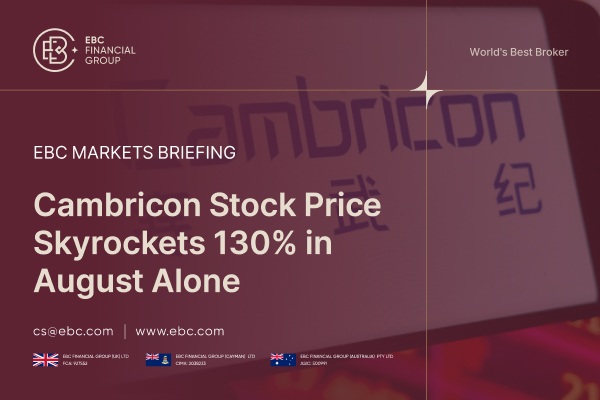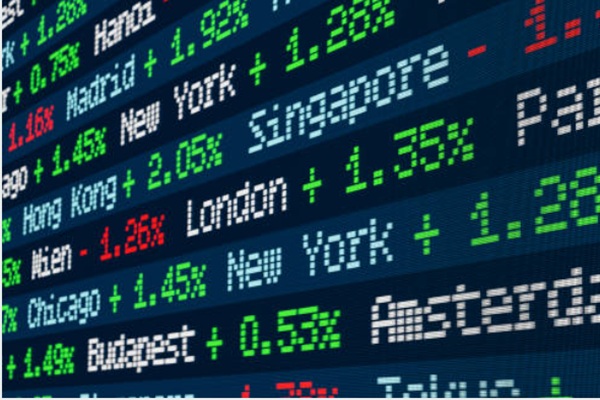As of April 9, 2025, silver prices are trading at $29.85 per share, and the investment community is closely examining silver's potential within the current economic landscape.
Unlike gold, silver occupies a dual role in financial markets. It is both a store of value and an essential industrial commodity. This unique position means silver is more volatile than gold but offers higher upside potential.
Hence the question: Is silver a good investment right now in 2025?
Current Performance of Silver
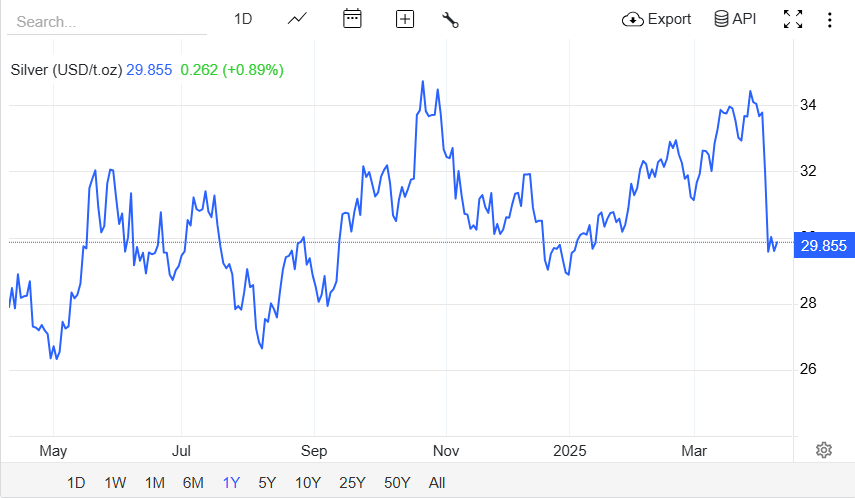
In early 2025, silver has demonstrated notable activity. By March 18, silver prices had surged 14% year-to-date, reaching $34.10 per ounce. This increase is attributed to gold's record performance, heightened safe-haven demand, and robust industrial usage, particularly in the electronics and renewable energy sectors.
For context, the Silver Institute expects silver demand for photovoltaics to rise by over 170% by 2030, driven by global energy transitions and manufacturing expansion.
However, the market has also experienced fluctuations. On April 4, silver prices declined to an eight-week low of $31.00 per ounce. This downturn was primarily driven by concerns over weakening industrial demand amid fears of a global recession exacerbated by recent tariff implementations.
Factors Influencing Silver Prices
Several key elements are impacting silver's market dynamics in 2025:
Industrial Demand: Silver's extensive use in industries like solar energy and electronics significantly affects its valuation. The ongoing expansion of renewable energy projects continues to bolster demand for silver.
Supply Constraints: The global silver supply is projected to grow by 3% in 2025, reaching an 11-year high of 1.05 billion ounces. Despite this increase, the market may remain in a sizeable deficit, indicating that demand continues to outpace supply.
Economic Indicators: Trade tensions and tariff policies have introduced volatility into the market, influencing investor sentiment and industrial activity. These factors contribute to short-term price fluctuations and impact long-term investment strategies.
Expert Projections and Investment Considerations
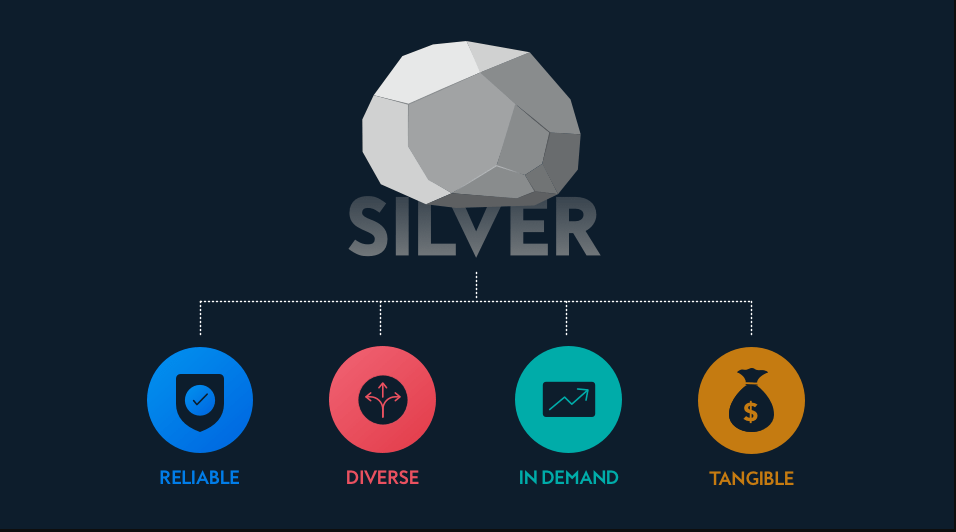
Analysts present a range of forecasts for silver's performance in 2025:
Sprott's Outlook: The experts at Sprott anticipate that silver will continue to benefit from industrial demand, particularly from sectors like solar energy and electric vehicles. They project a positive trajectory for silver prices throughout the year.
WisdomTree Analysis: Forecasts suggest that silver prices could reach $40 per ounce by the third quarter of 2025, marking a 17% increase from October 2024. This projection is based on expected supply deficits and sustained industrial demand.
LongForecast.com Predictions: According to their analysis, silver prices are expected to fluctuate throughout 2025, with prices ranging from $25.29 to $31.66 per ounce in May.
However, if you are adamant about investing in silver, you must consider the following:
Market Volatility: Silver prices have shown upward momentum and periods of decline, reflecting the metal's sensitivity to economic and industrial factors. Investors should prepare for potential price swings.
Diversification Benefits: Silver's dual role as an industrial commodity and a precious metal can offer diversification advantages within an investment portfolio, potentially serving as a hedge against economic uncertainties.
Long-Term Prospects: Despite short-term fluctuations, the long-term outlook for silver remains positive, driven by ongoing industrial applications and potential supply constraints.
Is Silver a Good Investment, or Is Gold Better in 2025 and Beyond?
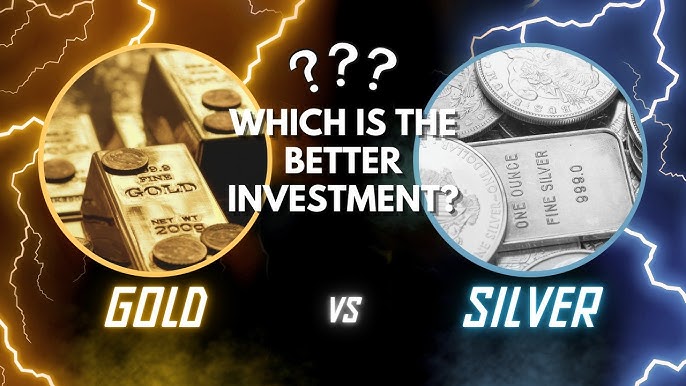
In 2025, gold and silver remain attractive investment options with unique strengths, risks, and market dynamics. Traditionally viewed as the ultimate safe-haven asset, gold's primary appeal lies in wealth preservation during financial uncertainty, inflation, or geopolitical instability.
In early 2025, gold hit record highs above $3,100 per ounce, driven by central bank purchases, global trade tensions, and declining confidence in fiat currencies. As for silver, it has seen price swings between $31 and $34 per ounce due to rapid changes in industrial demand, particularly from the booming solar energy and electric vehicle sectors.
When comparing the two metals to invest, you must consider these:
1) Risk Tolerance
Gold: Gold's steady performance makes it an ideal hedge against inflation and market downturns, suitable for conservative investors seeking capital preservation
Silver: Silver's greater volatility means it can deliver more gains but carries more short-term risk. For example, silver prices tend to experience sharper drawdowns during economic contractions. However, during bull markets or industrial booms, as seen in its 14% rally in the first quarter of 2025, silver can outperform gold.
2) Affordability
3) Diversification
Gold: Gold acts as a financial anchor in times of crisis, and a well-balanced metals portfolio might lean more heavily on gold for stability.
Silver: Silver adds growth potential tied to industrial and technological innovation
4) Market Liquidity and Institutional Demand
Gold: Gold benefits from deeper global liquidity, broader institutional interest, and a more established role in reserve portfolios.
Silver: Silver's market is smaller and more influenced by retail trends and speculative flows, contributing to its price volatility.
At the end of the day, whether gold or silver is a better investment depends on an investor's objectives. Those focused on long-term security and wealth preservation may prefer gold. Those seeking growth potential and are comfortable with price swings may lean toward silver. Many investors choose to hold both, benefiting from gold's resilience and silver's potential for outsized returns.
Conclusion
Considering the current market dynamics, silver presents a compelling investment opportunity in 2025. Its critical role in various industrial applications, combined with supply constraints and favourable price forecasts, positions silver as a potentially valuable addition to an investment portfolio.
However, investors should remain vigilant of market fluctuations and geopolitical developments impacting silver prices.
Disclaimer: This material is for general information purposes only and is not intended as (and should not be considered to be) financial, investment or other advice on which reliance should be placed. No opinion given in the material constitutes a recommendation by EBC or the author that any particular investment, security, transaction or investment strategy is suitable for any specific person.





